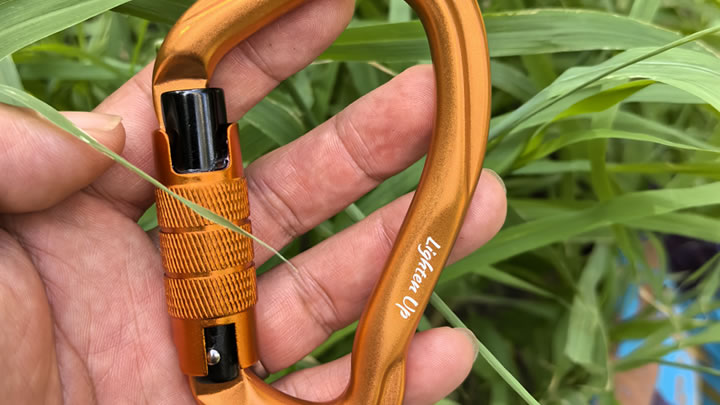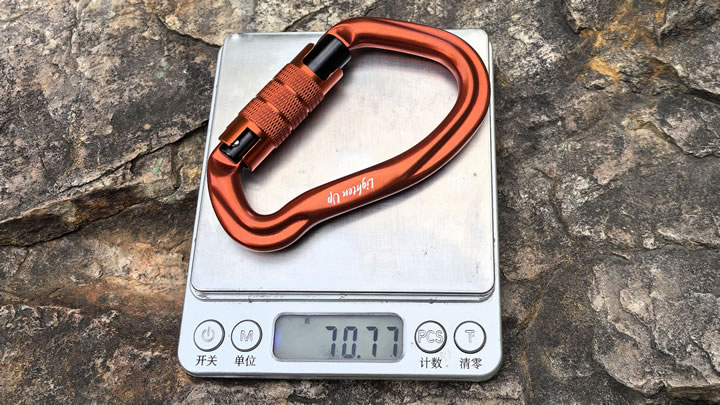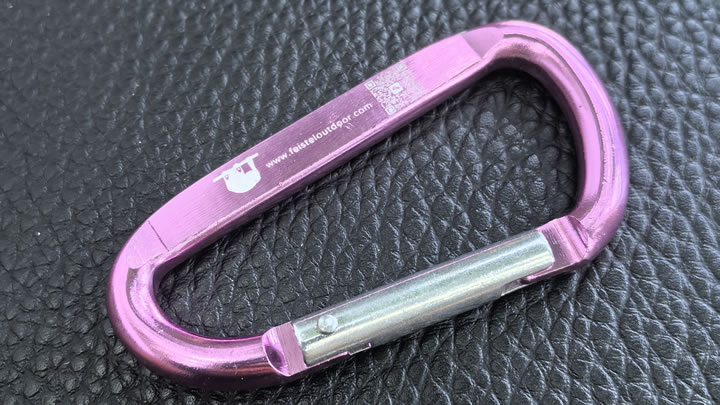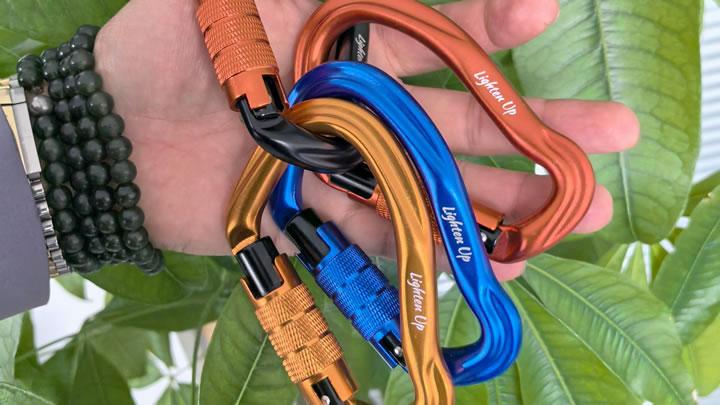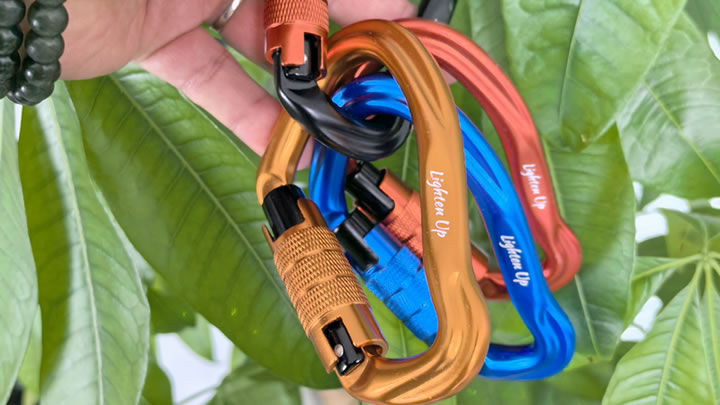D-shaped vs oval climbing carabiners pros and cons
In the world of climbing carabiners, shape dictates function. While D-shaped and oval carabiners may look similar at a glance, their geometries create vastly different performance profiles. Understanding these nuances can mean the difference between a smooth redpoint and a compromised anchor. Let’s dissect the engineering, use cases, and hidden tradeoffs of these two iconic designs.
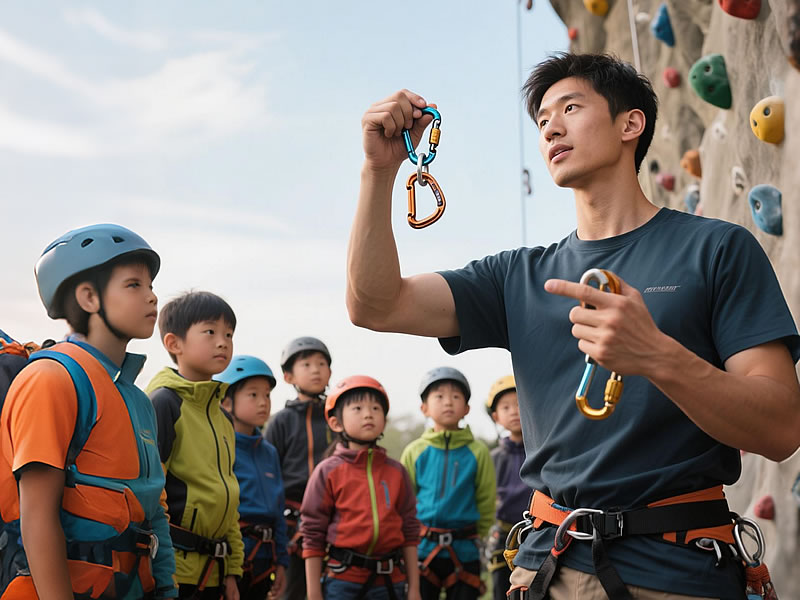
Anatomy of Strength: Design and Force Distribution
D-Shaped Carabiners
- Asymmetric Spine: The straight spine concentrates force along the major axis, aligning with the rope’s pull.
- Gate Geometry: Offset gate placement reduces rope-on-gate friction during clipping.
- Strength: Typically rated 24-28 kN major axis, 7-9 kN minor axis.
Oval Carabiners
- Symmetrical Frame: Even force distribution allows multidirectional loading.
- Open Center: Accommodates multiple slings or knots without cross-loading.
- Strength: Lower major axis ratings (20-23 kN) due to less efficient force paths.
Performance Comparison: Lab Data vs Real-World Use
| Criteria | D-Shaped Carabiners | Oval Carabiners |
|---|---|---|
| Weight | 30-50g (aluminum) | 40-70g (aluminum) |
| Gate Action | Smoother clipping | Higher friction, prone to gate flutter |
| Rope Wear | Concentrated on spine | Evenly distributed |
| Cross-Load Risk | Moderate | Low (symmetry resists twisting) |
| Gear Stacking | Limited by offset shape | Fits multiple slings/ropes |
Source: Black Diamond Lab Tests (2023)
Best Use Cases for Each Design
When to Choose D-Shaped:
- Sport Climbing Quickdraws: The offset spine aligns with rope direction, reducing gate twisting.
- Belay Devices: Compatible with assisted-braking devices like the Petzl Grigri.
- Ice Climbing: Lightweight profile minimizes rack weight.
When to Choose Oval:
- Traditional Anchors: Symmetry accommodates equalized cordelettes or sliding X systems.
- Hauling Pulleys: Open center fits thicker ropes.
- Aid Climbing: Allows multidirectional loading on bolts.
The Hidden Flaws Most Climbers Miss
D-Shaped Pitfalls:
- Asymmetric Rope Wear: Repeated clipping erodes the spine faster than ovals.
- Anchor Complexity: Difficult to equalize in multi-directional setups.
- False Security: High kN ratings tempt climbers to ignore cross-load risks.
Oval Weaknesses:
- Gate Chatter: Vibrations from wind or rope movement can unlock non-locking ovals.
- Weight Penalty: Extra grams add up on alpine routes.
- Outdated Myths: Some climbers overtrust ovals for “versatility” in sport scenarios.
Top Models by Discipline
| Model | Shape | Weight | Strength | Best For |
|---|---|---|---|---|
| Petzl Spirit | D | 33g | 23 kN | Sport climbing |
| Black Diamond Oval | Oval | 58g | 21 kN | Trad anchors |
| DMM Phantom | D | 29g | 24 kN | Ice/Mixed |
| Camp Orbit Wire | Oval | 49g | 20 kN | Aid climbing |
Expert Tips for Hybrid Racking
- Mix on Multipitch: Use D-shaped for belay devices and ovals for anchor building.
- Color Code: Assign colors by shape (e.g., blue for D, yellow for oval).
- Retire Strategically: D-shaped carabiners wear faster on spines; ovals fail first at gates.
The Physics Behind the Shapes
- D-Shaped Efficiency: The straight spine creates a direct load path, minimizing bending stress. Finite element analysis shows D-shapes handle 15% more impact force than ovals.
- Oval Flexibility: Symmetry allows force redistribution—critical when anchors shift during pendulum swings or rockfall.
When to Break the Rules
- Big Walls: Use ovals for their hauling capacity despite the weight.
- Gym Climbing: D-shaped carabiners dominate, but ovals work for top-rope setups.
- Rescue Scenarios: Oval’s multidirectional strength suits complex rigging.
The Verdict
D-shaped carabiners excel in sport and ice climbing where weight and clipping efficiency rule. Ovals remain indispensable for trad and rescue applications requiring versatility. As IFMGA guide Emily Harrington advises: “Carry both. Your rack should look like a toolbox, not a monogamous relationship.”

